Xenomai 3 – An Overview of the
Real-Time Framework for Linux
Copyright © Philippe Gerum 2005-2015
Copyright © Gilles Chanteperdrix 2015
Copyright © Free Electrons 2004-2015
Copyright © Siemens AG, 2015
Creative Commons BY-SA 3.0 license
�
Xenomai 3 – An Overview of the
Real-Time Framework for Linux
Agenda
Project introduction
Co-Kernel technology, now and then
Xenomai 3 for native Linux
Improving co-kernel integration
Summary
Page 2
April 2016
Jan Kiszka, Corporate Technology
© Siemens AG 2015, et al. Creative Commons BY-SA 3.0 license.
�
What is Xenomai?
• Old-style real-time extension for Linux?
• Something like / a fork of RTAI?
• Requires real-time applications to be kernel modules?
• …?
Page 3
April 2016
Jan Kiszka, Corporate Technology
© Siemens AG 2015, et al. Creative Commons BY-SA 3.0 license.
�
What is Xenomai really?
• Old-style real-time extension for Linux?
• Something like RTAI / RTLinux?
Xenomai is an RTOS-to-Linux
• …
Portability Framework
• RTOS-to-Linux portability framework
• Come in two flavors
It now comes in two flavors
• As co-kernel extension for (patched) Linux
• As co-kernel extension for (patched) Linux
• As libraries for native Linux (including PREEMPT-RT)
• As libraries for native Linux (including PREEMPT-RT)
Page 4
April 2016
Jan Kiszka, Corporate Technology
© Siemens AG 2015, et al. Creative Commons BY-SA 3.0 license.
�
Xenomai History
Xenomai 1.0
• Announced in 2001 – as portability framework for RTOS applications
• Required a real-time basis
• Development of ADEOS layer for Linux and RTAI
• Merged with RTAI => RTAI/fusion
Xenomai 2.0
• Departed from RTAI in 2005 – incompatible design goals
• Evolved ADEOS to I-pipe layer (also used by RTAI)
• Ported to 6 architectures
Xenomai 3.0
• Released in 2015 after >5 years of development
• Rework of in-kernel core (now POSIX-centric)
• Support for native Linux
Page 5
April 2016
Jan Kiszka, Corporate Technology
© Siemens AG 2015, et al. Creative Commons BY-SA 3.0 license.
�
People behind Xenomai
Philippe Gerum
–
Project founder and maintainer
Gilles Chanteperdrix
– ARM, x86 archs, Xenomai 2 & 3 core, RTnet
Alexis Berlemont
– Analogy stack
Jorge Ramirez-Ortiz
– Analogy stack
Wolfgang Grandegger
– Real-time CAN
Jan Kiszka
et al.
– RTDM, x86 arch, assorted
Page 6
April 2016
Jan Kiszka, Corporate Technology
© Siemens AG 2015, et al. Creative Commons BY-SA 3.0 license.
�
Xenomai Applications
• Machine control systems, PLCs
• Printing machines (manroland)
• Printers / copying machines
• Network switches (e.g. Ruggedcom)
• Magnetic resonance tomographs (Siemens Healthcare)
• OROCOS (OSS robotics framework)
• Robotic research projects
• … (many, many incognito applications)
Page 7
April 2016
Jan Kiszka, Corporate Technology
© Siemens AG 2015, et al. Creative Commons BY-SA 3.0 license.
�
Xenomai 3 – An Overview of the
Real-Time Framework for Linux
Agenda
Project introduction
Co-Kernel technology, now and then
Xenomai 3 for native Linux
Improving co-kernel integration
Summary
Page 8
April 2016
Jan Kiszka, Corporate Technology
© Siemens AG 2015, et al. Creative Commons BY-SA 3.0 license.
�
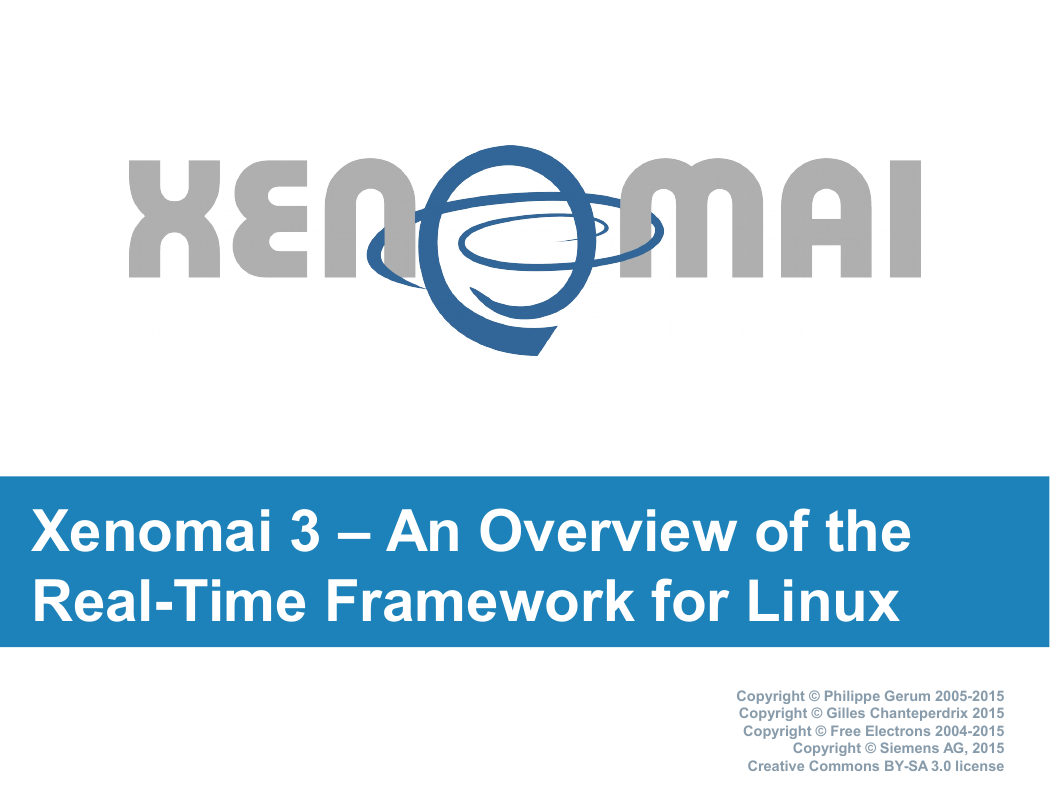
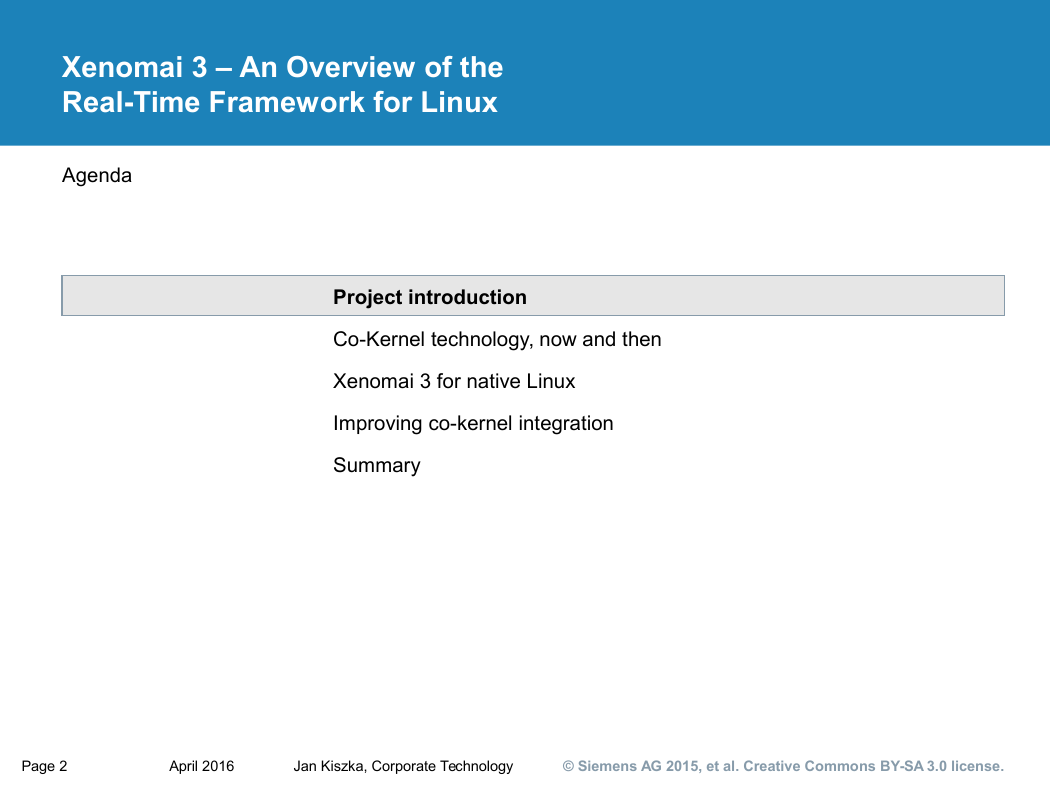
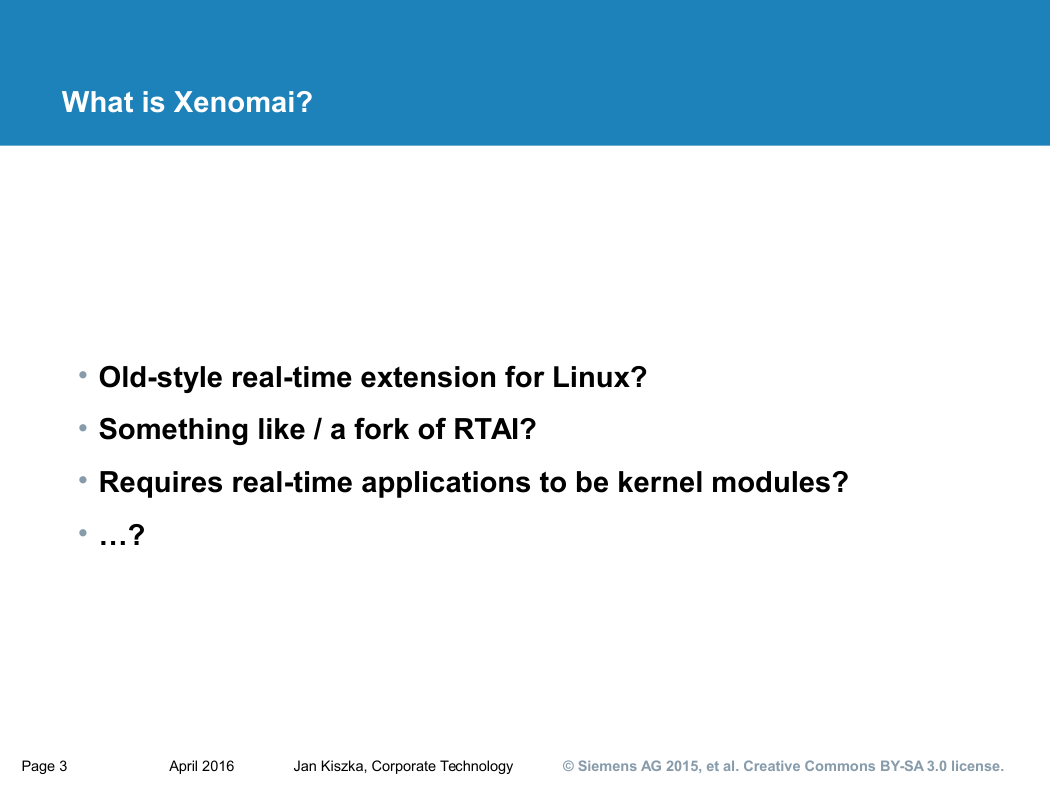
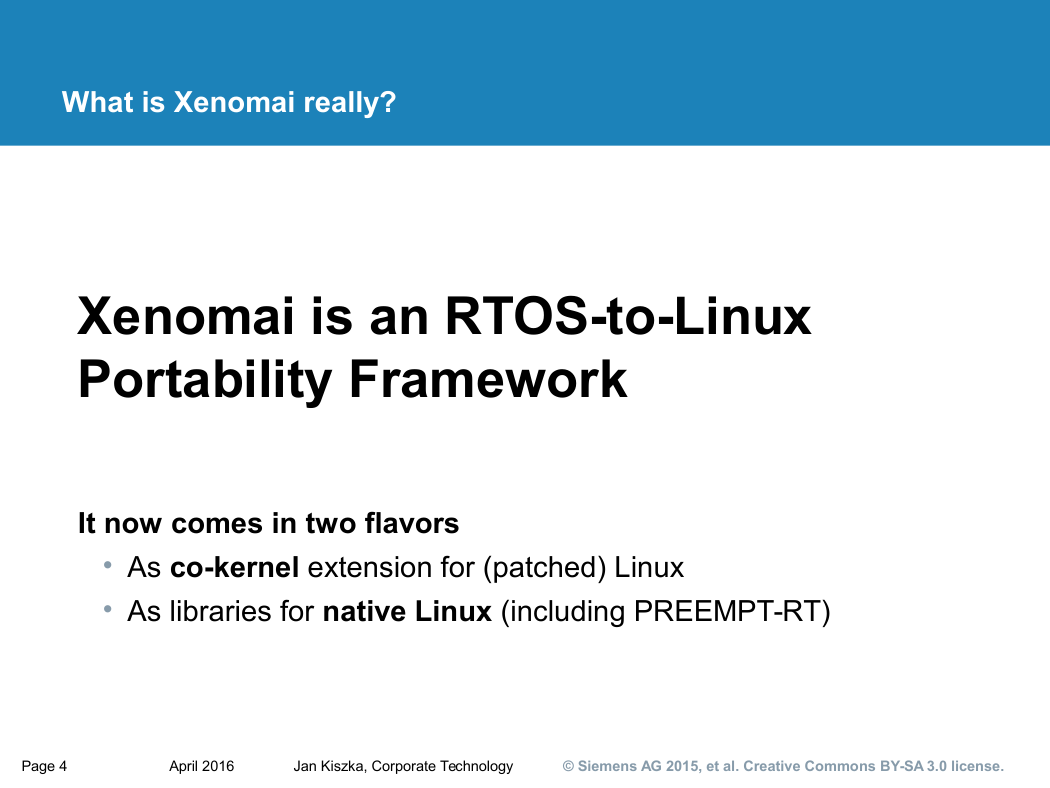
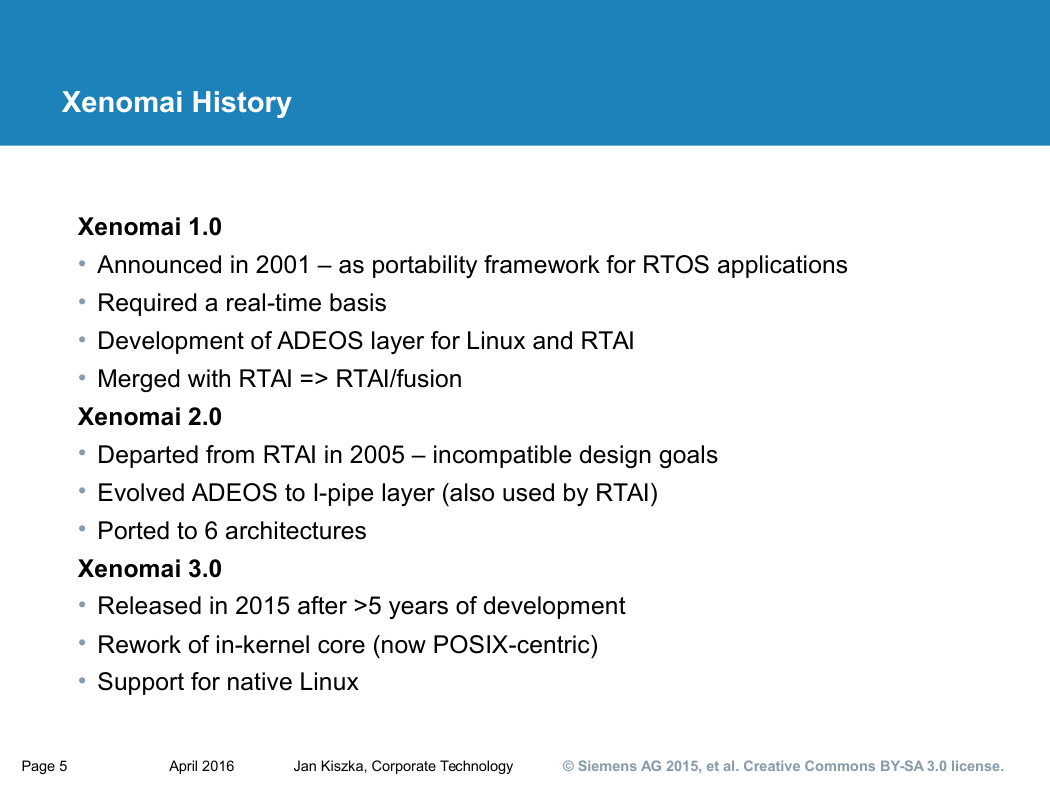
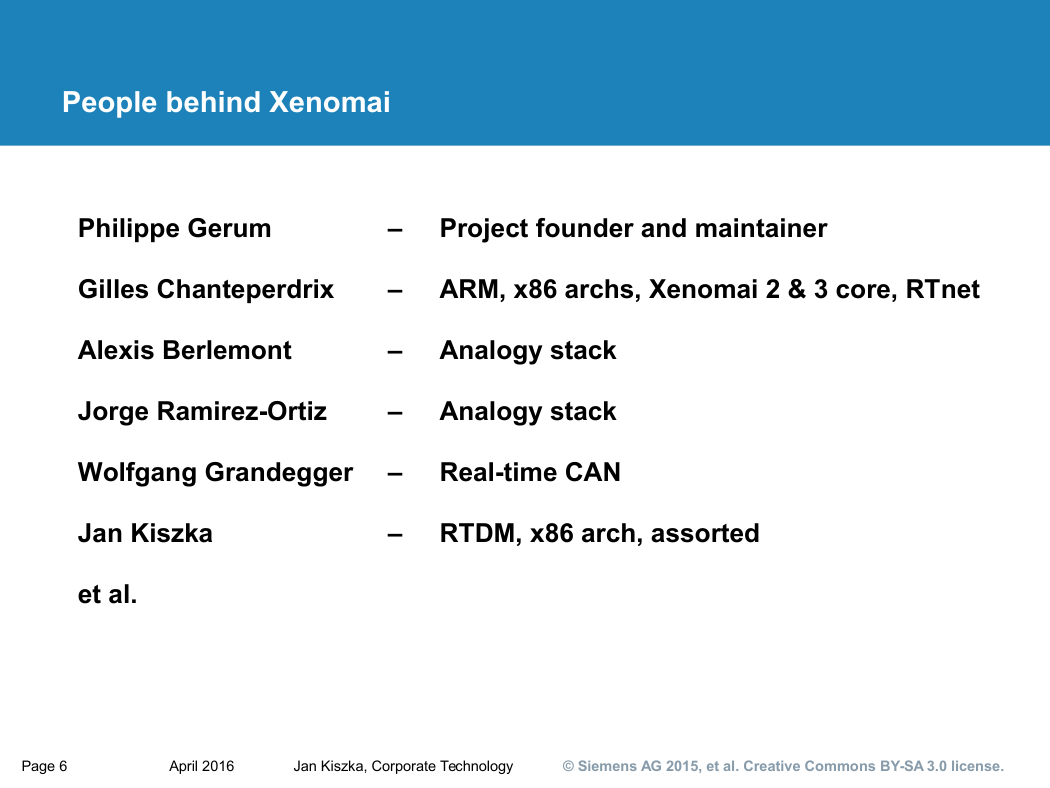
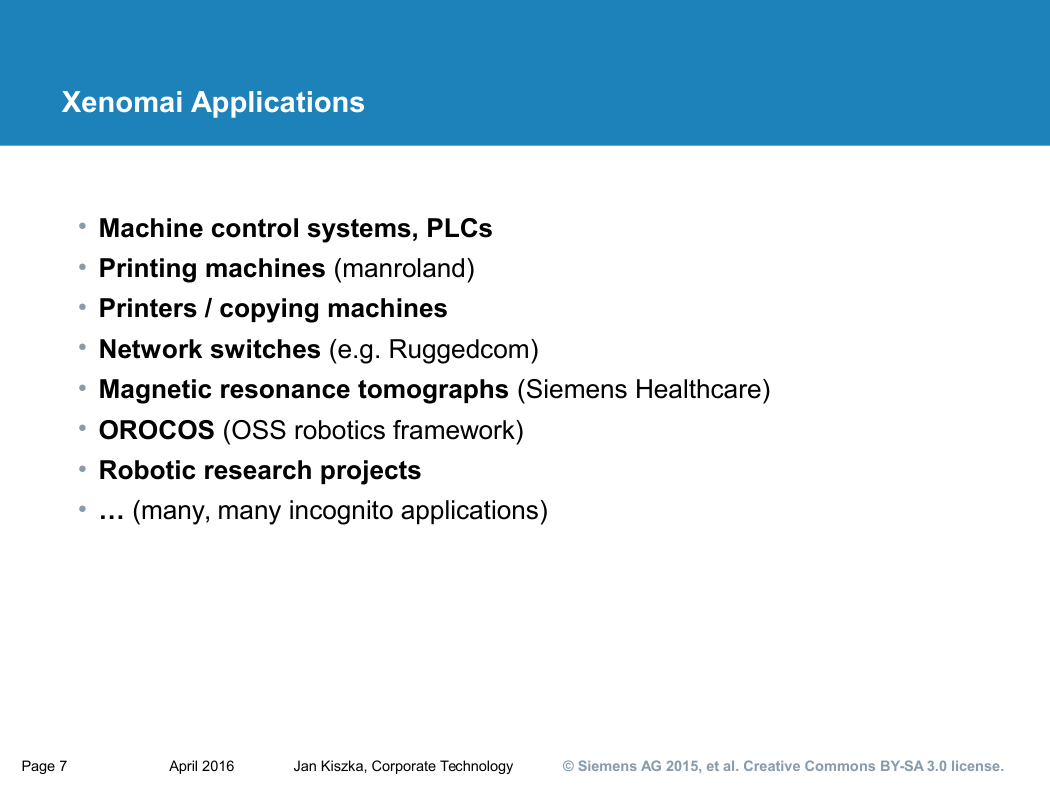
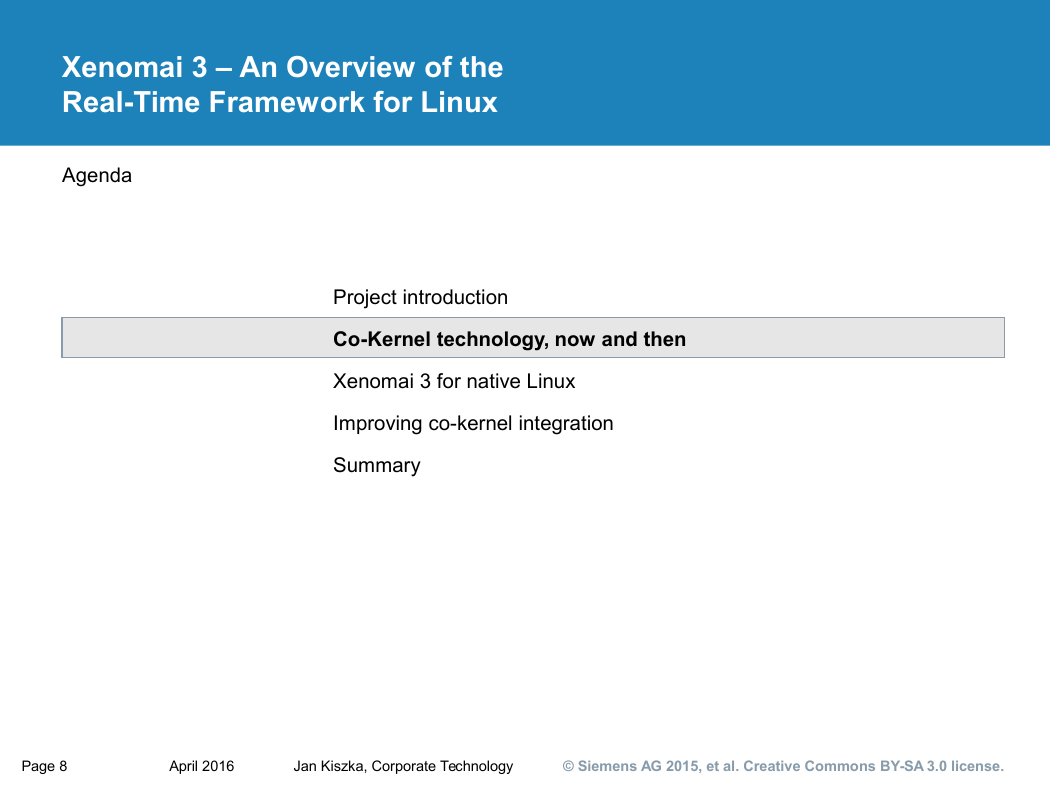








 2023年江西萍乡中考道德与法治真题及答案.doc
2023年江西萍乡中考道德与法治真题及答案.doc 2012年重庆南川中考生物真题及答案.doc
2012年重庆南川中考生物真题及答案.doc 2013年江西师范大学地理学综合及文艺理论基础考研真题.doc
2013年江西师范大学地理学综合及文艺理论基础考研真题.doc 2020年四川甘孜小升初语文真题及答案I卷.doc
2020年四川甘孜小升初语文真题及答案I卷.doc 2020年注册岩土工程师专业基础考试真题及答案.doc
2020年注册岩土工程师专业基础考试真题及答案.doc 2023-2024学年福建省厦门市九年级上学期数学月考试题及答案.doc
2023-2024学年福建省厦门市九年级上学期数学月考试题及答案.doc 2021-2022学年辽宁省沈阳市大东区九年级上学期语文期末试题及答案.doc
2021-2022学年辽宁省沈阳市大东区九年级上学期语文期末试题及答案.doc 2022-2023学年北京东城区初三第一学期物理期末试卷及答案.doc
2022-2023学年北京东城区初三第一学期物理期末试卷及答案.doc 2018上半年江西教师资格初中地理学科知识与教学能力真题及答案.doc
2018上半年江西教师资格初中地理学科知识与教学能力真题及答案.doc 2012年河北国家公务员申论考试真题及答案-省级.doc
2012年河北国家公务员申论考试真题及答案-省级.doc 2020-2021学年江苏省扬州市江都区邵樊片九年级上学期数学第一次质量检测试题及答案.doc
2020-2021学年江苏省扬州市江都区邵樊片九年级上学期数学第一次质量检测试题及答案.doc 2022下半年黑龙江教师资格证中学综合素质真题及答案.doc
2022下半年黑龙江教师资格证中学综合素质真题及答案.doc